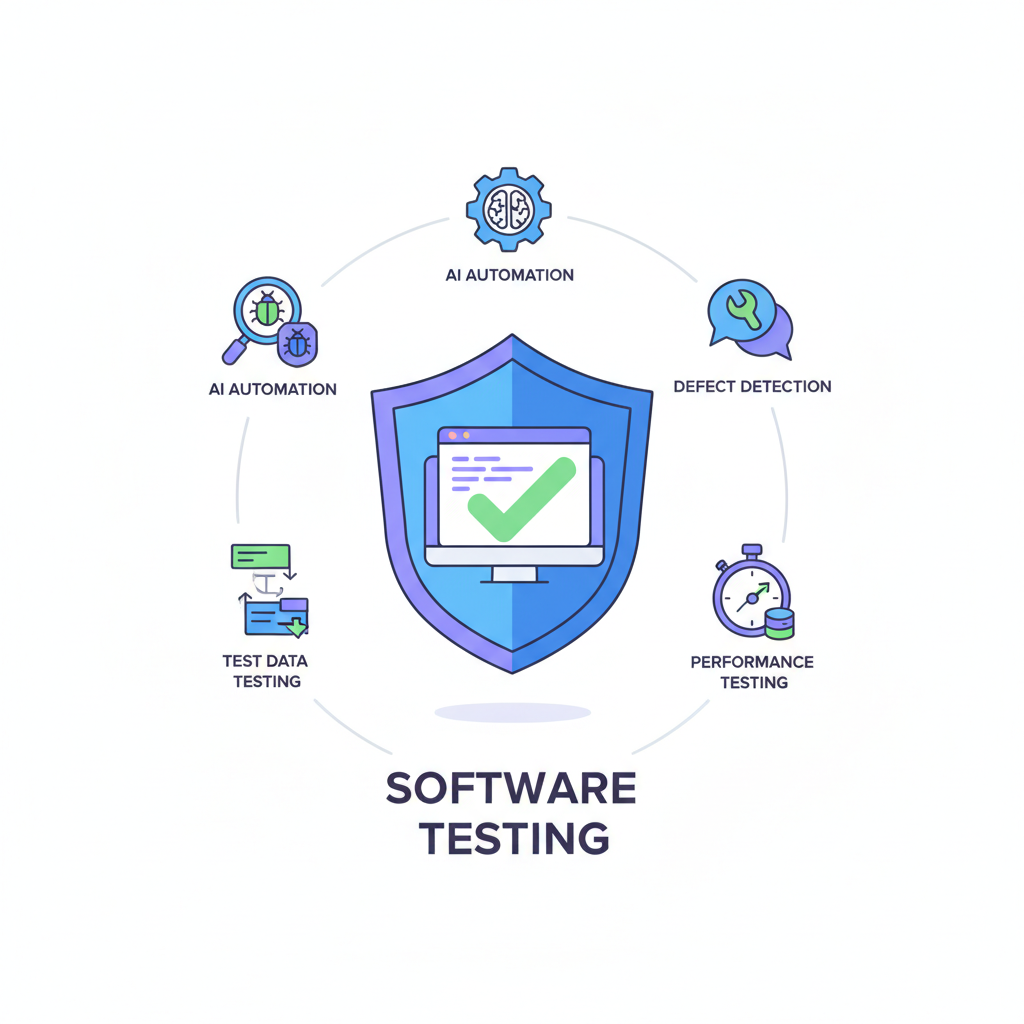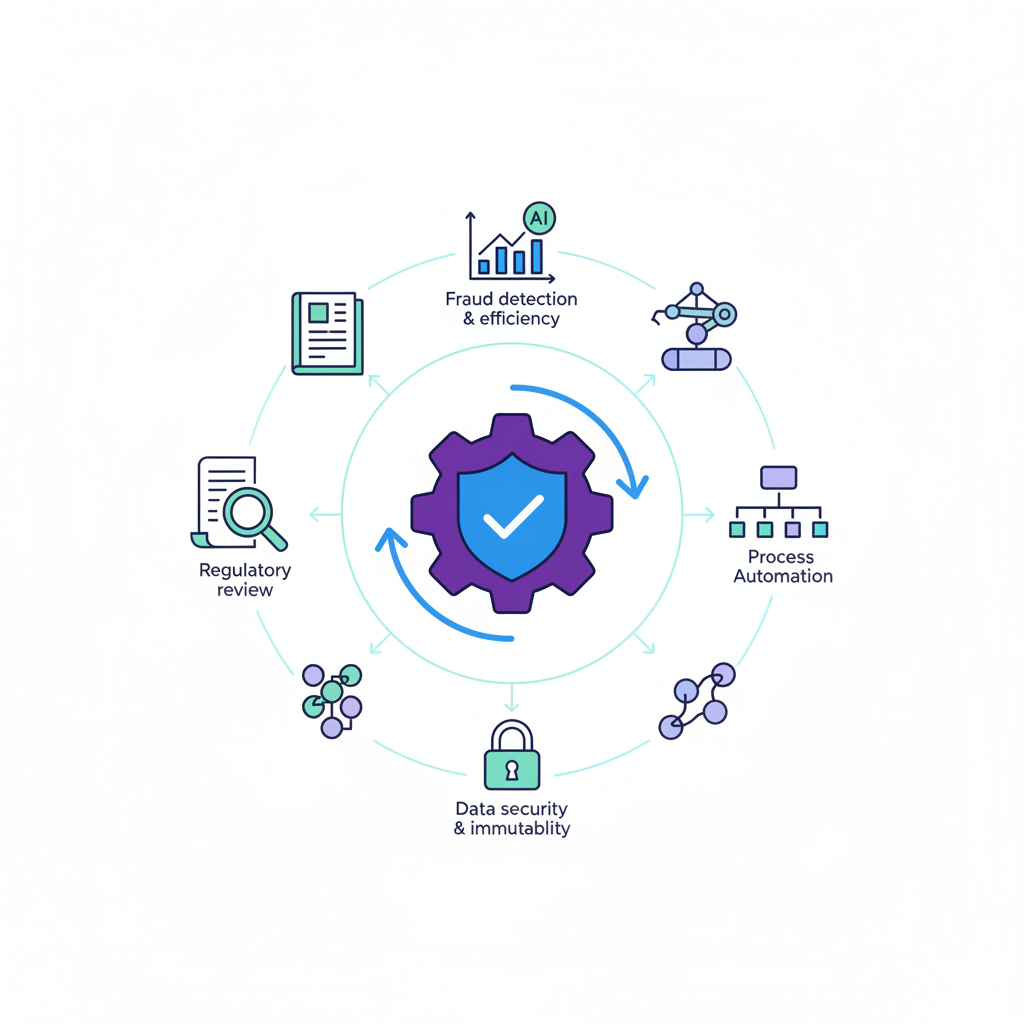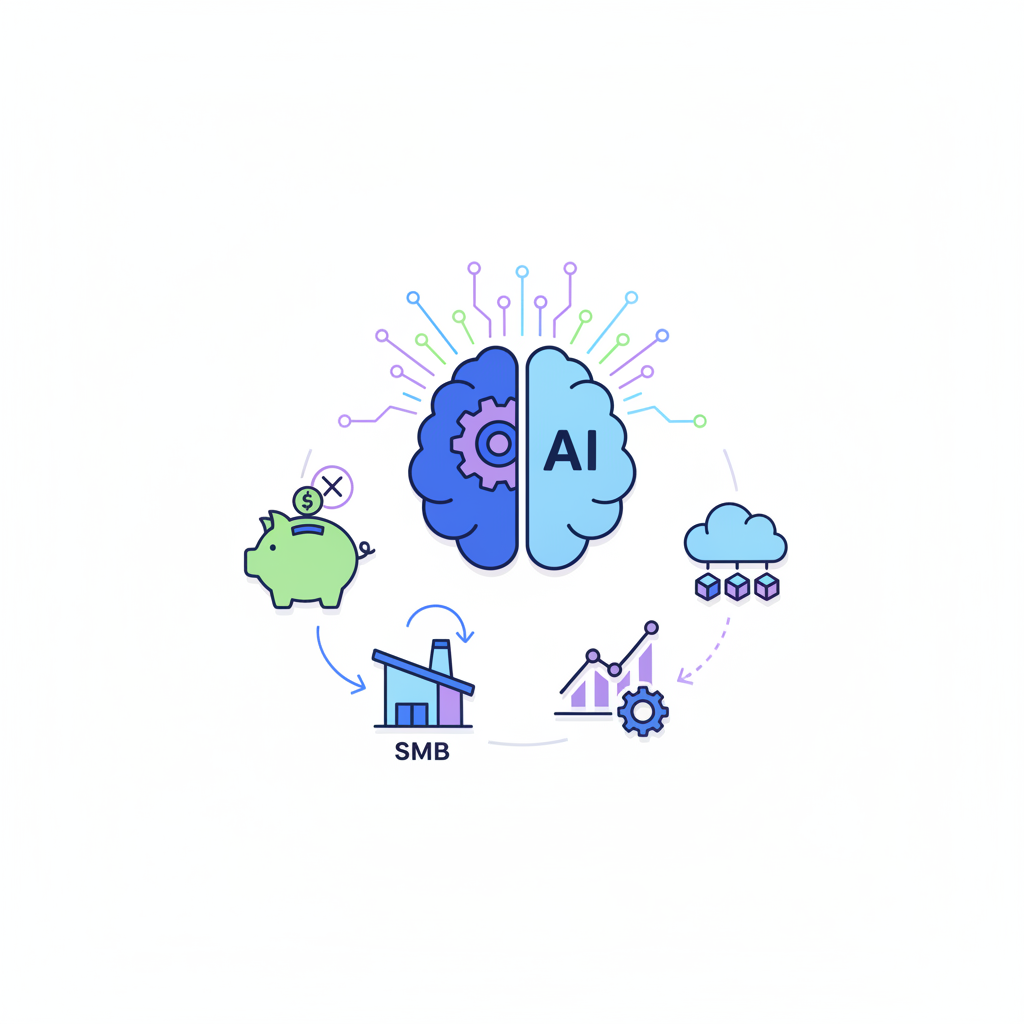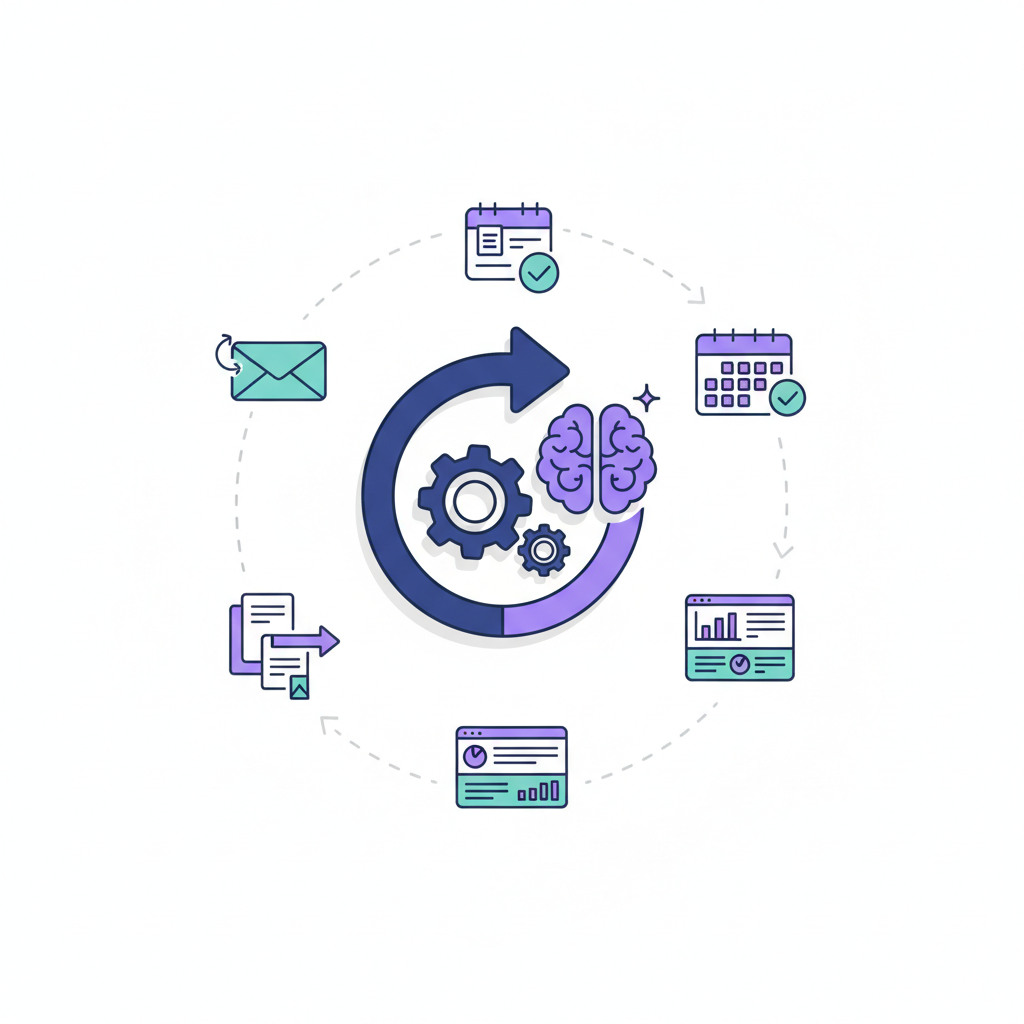Top 10 AI Tools for Software Testing
Discover the top 10 AI tools for software testing in 2025: Testim.io, Applitools, Mabl, Functionize, Katalon, Sauce Labs, Perfecto, Cypress, Avo Automation, and Testsigma. Learn how AI enables self-healing, visual testing, and autonomous QA.

The Future is Now: Why AI Tools are Revolutionizing Software Testing
The landscape of software development is undergoing a seismic shift. With the increasing complexity of modern applications, the relentless demand for faster release cycles, and the imperative for flawless user experiences, traditional software testing methodologies are struggling to keep pace. Development teams are often caught in a bottleneck, where manual and even basic automated testing efforts lead to flaky tests, high maintenance costs, and an inability to achieve comprehensive coverage. This struggle not only delays releases but also compromises product quality and user satisfaction.
Enter Artificial Intelligence. AI tools for software testing are emerging as a game-changer, offering unprecedented levels of efficiency, accuracy, and coverage. By leveraging machine learning, natural language processing, and advanced analytics, AI is transforming the entire automated testing workflow, moving beyond simple script execution to intelligent, adaptive, and predictive quality assurance. This article will delve into the "why" and "how" of AI in testing, explore the top AI testing tools available today, provide a practical guide for selecting the right solution, and offer a glimpse into the future outlook of this exciting field.
The Rise of AI in Software Testing: Beyond Hype to Practical Application
For years, the concept of AI in testing was often met with skepticism, viewed more as a futuristic ideal than a practical solution. However, the fundamental question, "Can AI tools be used in software testing?" has decisively shifted from "if" to "how effectively." We are witnessing a significant evolution in the testing paradigm, moving from purely manual efforts to script-based automation, and now, to sophisticated AI-driven testing. This progression is not just about adopting new technology; it's about fundamentally rethinking how quality is assured in a rapidly changing digital world.
Traditional automation, while a significant leap from manual testing, comes with its own set of limitations. High maintenance costs due to frequent UI changes, the prevalence of flaky automation tests that yield inconsistent results, and a limited scope often hinder its effectiveness. These challenges lead to a substantial investment in test maintenance rather than new test creation, creating a cycle of inefficiency. AI testing tools directly address these pain points. By integrating AI, testing becomes more robust and efficient. AI can learn from past test executions, adapt to application changes, and even predict potential failure points. The key drivers for AI adoption are clear: unparalleled speed in test execution and analysis, enhanced accuracy in defect detection, significant cost reduction through reduced manual effort and maintenance, and ultimately, more comprehensive test coverage across complex systems. The initial AI in testing hype is now giving way to tangible, practical applications that are reshaping the industry.
How AI Transforms Software Testing: Key Capabilities & Benefits
AI's integration into software testing is not a monolithic concept; rather, it encompasses a suite of capabilities that collectively elevate the entire quality assurance process. These capabilities address long-standing challenges, offering practical benefits that were previously unattainable. Understanding these specific applications is crucial to appreciating the transformative power of AI-assisted test creation and maintenance tools.
AI-Powered Test Case Generation & Optimization
One of the most time-consuming aspects of testing is test creation. AI revolutionizes this by enabling automated test script creation. Machine learning algorithms can analyze application logs, user behavior data, and existing test cases to identify critical paths and generate new, optimized test scripts. This includes intelligent test data generation, where AI can create realistic and diverse data sets, reducing the effort required to set up test environments. Furthermore, AI can identify optimal test paths, prioritizing tests that cover the most critical functionalities or areas prone to defects, ensuring maximum impact with minimal effort. This capability significantly accelerates the initial setup phase of any automated testing workflow.
Self-Healing Tests & Autonomous AI Testing
The bane of traditional test automation is maintenance. Minor UI changes often break existing scripts, leading to constant rework. Autonomous AI testing tools introduce "self-healing" capabilities. These tools use AI to automatically adapt to UI changes by intelligently locating elements even if their attributes have changed. This means tests can fix broken tests automatically, drastically reducing test maintenance overhead and improving the stability of your test suite. This adaptive nature makes automation far more resilient and reliable, allowing teams to focus on new feature development rather than fixing existing tests.
Visual Testing & UI Anomaly Detection
User interface (UI) quality is paramount, yet subtle visual regressions can be hard to catch with traditional methods. AI-driven visual testing tools employ advanced image recognition and machine learning to perform pixel-by-pixel or component-level comparisons of UI elements across different builds, browsers, and devices. They can detect subtle visual anomalies, layout shifts, font changes, or missing elements that human eyes might miss, ensuring a consistent and high-quality user experience. This goes beyond simple screenshot comparisons, understanding the context and intent of visual elements.
Defect Prediction & Root Cause Analysis
Leveraging historical data from past projects, code repositories, and defect tracking systems, AI can predict potential defect areas within new code or features. By analyzing patterns, AI can highlight modules or functionalities that are statistically more likely to contain bugs, allowing testers to focus their efforts proactively. When defects do occur, AI can assist in root cause analysis by correlating test failures with recent code changes, build environments, or specific user interactions, leading to faster debugging and resolution. This predictive capability is invaluable for shifting left in the testing process.
Performance & API Testing Enhancements
AI also extends its benefits to performance and API testing. For performance testing, AI can generate intelligent load patterns that mimic real-world user behavior more accurately than static scripts, identifying bottlenecks under realistic conditions. It can also detect anomalies in performance metrics, pinning unusual spikes or drops that indicate underlying issues. For API testing tools for 2025, AI can intelligently create and validate API test cases, analyze API responses for subtle errors, and even suggest optimal test sequences, making the process more efficient and comprehensive.
Top 10 AI Tools for Software Testing: An In-Depth Look
The market for AI test automation tools is rapidly expanding, with numerous solutions promising to streamline and enhance your quality assurance efforts. Selecting the best AI testing tools requires understanding their core strengths and how they align with your specific project needs. Here’s a curated list of the top 10 AI tools for software testing, each bringing unique AI-driven capabilities to the table. We’ll delve into their practical applications and specific use cases.
1. Testim.io
Testim.io is renowned for its AI-powered stable locators and self-healing tests, which significantly reduce test maintenance. Its AI observes changes in the application under test and automatically updates test steps, making automation less flaky. Testim offers fast authoring through a low-code/no-code interface, allowing testers to create robust tests quickly. It also incorporates visual validation to catch UI regressions.
- Key AI-driven features: Smart locators, self-healing, visual validation.
- Ideal use cases: Agile teams requiring rapid test creation and minimal maintenance in CI/CD pipelines.
- Unique selling points: Focus on stability and speed, excellent for web applications.
2. Applitools
Applitools is a leader in visual AI for UI testing. Its Eyes SDK uses AI to compare UI elements, detecting subtle visual regressions across different browsers and devices. The Ultrafast Test Cloud allows for parallel execution of visual tests, dramatically speeding up feedback cycles. Applitools goes beyond pixel comparison, understanding the context of UI elements, which helps in identifying true visual bugs versus acceptable variations.
- Key AI-driven features: Visual AI, UI anomaly detection, Ultrafast Test Cloud.
- Ideal use cases: Applications with complex UIs, e-commerce, and brands where visual consistency is critical.
- Unique selling points: Industry-leading visual AI, cross-browser/device compatibility.
3. Mabl
Mabl offers low-code test automation with a strong emphasis on auto-healing tests. Its AI-driven insights provide actionable data on application health, performance, and user experience. Mabl focuses on end-to-end testing, allowing teams to create comprehensive tests that adapt to changes automatically. It learns from user interactions and application behavior to improve test coverage and reliability over time.
- Key AI-driven features: Auto-healing, AI-driven insights, intelligent test discovery.
- Ideal use cases: Teams needing fast, reliable end-to-end testing with minimal coding effort, especially for web applications.
- Unique selling points: Integrated platform for E2E testing, deep learning for application changes.
4. Functionize
Functionize stands out with its Intelligent Test Cloud and autonomous testing capabilities. It uses natural language processing (NLP) for test creation, allowing users to describe tests in plain English. Its AI agents continuously learn and self-improve tests, making them more resilient and effective. Functionize aims to eliminate test maintenance by autonomously adapting to application changes.
- Key AI-driven features: Autonomous testing, NLP for test creation, self-improving tests.
- Ideal use cases: Complex applications requiring highly adaptive and intelligent test suites, teams looking to minimize manual test authoring.
- Unique selling points: True autonomous testing, NLP-driven test generation.
5. Katalon Studio (with AI features)
Katalon Studio is a comprehensive low-code test automation platform that has integrated powerful AI features. These include Smart Wait, which intelligently handles dynamic loading times, and self-healing capabilities for robust element identification. Its AI-powered test generation, like the Smart Recorder, can suggest and create test steps based on user actions. It also offers seamless integration with open-source frameworks like Selenium and Playwright.
- Key AI-driven features: Smart Wait, self-healing, AI-powered test generation.
- Ideal use cases: Teams with mixed skill sets, needing a versatile platform for web, mobile, API, and desktop testing.
- Unique selling points: All-in-one platform with strong community support and AI enhancements.
6. Sauce Labs (with AI capabilities)
Sauce Labs, known for its cloud-based testing platform, incorporates AI capabilities for visual testing, error analysis, and predictive analytics. Its visual testing solution helps identify UI regressions, while AI-driven error analysis provides faster root cause identification for test failures. Predictive analytics can highlight flaky tests or areas prone to failure, improving overall test suite stability.
- Key AI-driven features: Visual testing, AI-driven error analysis, predictive analytics.
- Ideal use cases: Large-scale testing, cross-browser/device compatibility, and performance testing in the cloud.
- Unique selling points: Robust cloud infrastructure, comprehensive analytics, integration with open-source tools.
7. Perfecto
Perfecto offers a cloud-based testing platform with AI-driven test failure analysis and self-healing capabilities. Its smart reporting provides intelligent insights into test results, helping teams quickly understand the impact of failures. Perfecto focuses heavily on mobile and web testing, ensuring tests are resilient and provide accurate feedback across diverse environments.
- Key AI-driven features: AI-driven test failure analysis, self-healing, smart reporting.
- Ideal use cases: Mobile and web application testing, especially for teams requiring extensive device and browser coverage.
- Unique selling points: Cloud-native platform, strong mobile testing focus, intelligent reporting.
8. Cypress (with AI extensions/plugins)
Cypress is a popular, developer-friendly end-to-end testing framework. While not inherently AI-driven, its robust plugin ecosystem allows for the integration of AI capabilities. Community-driven AI plugins can add features like visual regression testing (e.g., Percy by BrowserStack, which uses AI for visual comparisons) or self-healing locators. This makes Cypress a flexible choice for teams wanting to augment their existing E2E tests with AI.
- Key AI-driven features: Extensible via AI plugins for visual regression, self-healing.
- Ideal use cases: Dev-centric teams who prefer JavaScript-based testing and want to add AI capabilities through extensions.
- Unique selling points: Developer experience, fast execution, strong community, flexibility with plugins.
9. Avo Automation
Avo Automation provides codeless test automation powered by AI for intelligent object identification and data management. It allows business users and QA professionals to create tests without writing a single line of code. Its AI capabilities ensure robust object recognition even with UI changes and facilitate intelligent test data generation and management across various platforms.
- Key AI-driven features: AI-powered object identification, intelligent data management.
- Ideal use cases: Organizations seeking to empower business analysts and manual testers to create automation, cross-platform applications.
- Unique selling points: Truly codeless, strong focus on enterprise applications like SAP.
10. Testsigma
Testsigma is a cloud-based, scriptless automation platform that leverages AI for test maintenance, natural language processing (NLP) for test script creation, and self-healing capabilities. Users can write tests in plain English, and Testsigma's AI translates them into executable scripts, making automation accessible to a wider audience. Its self-healing features ensure tests remain stable over time.
- Key AI-driven features: AI-driven test maintenance, NLP for test script creation, self-healing.
- Ideal use cases: Teams seeking simplicity and speed in test automation, especially those with limited coding expertise.
- Unique selling points: NLP-driven test creation, cloud-native, scriptless approach.
Comparison Table: Top AI Testing Tools
| Tool Name | Primary AI Focus | Key Features | Ideal Use Case | Integration | Pricing Model (Approx.) |
|---|---|---|---|---|---|
| Testim.io | Self-healing, Visual Validation | Stable locators, fast authoring | Agile teams, CI/CD | CI/CD, Jira | SaaS (tiered) |
| Applitools | Visual AI, UI Anomaly Detection | Eyes SDK, Ultrafast Test Cloud | UI/UX heavy apps | Selenium, Cypress | SaaS (usage-based) |
| Mabl | Low-code, Auto-healing | End-to-end, AI insights | Teams needing fast E2E | CI/CD, Slack | SaaS (tiered) |
| Functionize | Autonomous Testing, NLP | Intelligent Test Cloud, self-improving | Complex applications | Jira, Slack | Enterprise (custom) |
| Katalon Studio | Smart Wait, Self-healing, Test Gen | Low-code, comprehensive platform | Mixed skill teams | Jira, Jenkins | Free/SaaS (tiered) |
| Sauce Labs | Visual Testing, Predictive Analytics | Cloud platform, error analysis | Large-scale testing | CI/CD, Jira | SaaS (usage-based) |
| Perfecto | Failure Analysis, Self-healing | Cloud-based, smart reporting | Mobile/Web testing | CI/CD, Jira | SaaS (tiered) |
| Cypress | Extensible AI (plugins) | Fast E2E, developer-friendly | Dev-centric teams | CI/CD, Git | Open-source/SaaS (plugins) |
| Avo Automation | Codeless, Object Identification | Intelligent data, cross-platform | Business users, QA | Jira, SAP | Enterprise (custom) |
| Testsigma | NLP, Self-healing, Maintenance | Cloud-based, scriptless | Teams seeking simplicity | CI/CD, Slack | SaaS (tiered) |
Choosing the Right AI Testing Tool for Your Needs: A Buyer's Guide
Selecting the "best" AI tool for software testing isn't about finding a universally superior product; it's about identifying the most suitable solution for your unique context. With the array of options available, a structured approach is essential to avoid common pitfalls and ensure a successful implementation. This buyer's guide provides a clear framework for evaluating and selecting the AI testing tools that will best serve your organization's automated testing workflow.
1. Define Your Testing Goals & Scope
Before looking at tools, clearly articulate the problems you're trying to solve. Are you aiming to reduce test maintenance costs, accelerate test creation, improve the visual quality of your UI, or enhance the reliability of your test suite? Understanding your primary pain points and the scope of your testing (e.g., web, mobile, API, desktop) will narrow down your options considerably. For instance, if visual quality is paramount, tools like Applitools will be a top contender.
2. Assess Your Team's Skillset & Resources
Consider your team's technical proficiency. Do you have developers comfortable with coding (e.g., Playwright, Selenium, or JavaScript for Cypress plugins), or do you need low-code/no-code solutions that empower business users and manual testers (e.g., Mabl, Avo Automation, Testsigma)? Evaluate the training requirements for new tools and the available budget for both the tool itself and any necessary upskilling of personnel. Free AI testing tools or open-source AI testing tools might be a good starting point for teams with limited budgets but strong technical capabilities.
3. Consider Integration with Existing Ecosystem
A new tool should seamlessly integrate into your existing development and testing ecosystem. This includes your CI/CD pipelines (Jenkins, GitLab CI, GitHub Actions), version control systems (Git), project management tools (Jira), and other testing tools you currently use. Poor integration can negate the benefits of AI by creating new bottlenecks. Ensure the tool supports the frameworks and languages your team already uses.
4. Evaluate AI Capabilities & Accuracy
Dive deep into the specific AI capabilities offered. How robust is the self-healing? What is the precision of the visual AI? How intelligent is the test generation, and what are the false positive/negative rates? Request demos and conduct proof-of-concept projects to see the AI in action with your own application. Look for tools that demonstrate a high degree of accuracy and adaptability.
5. Scalability, Support & Vendor Reputation
Will the tool scale with your growing needs, both in terms of test volume and team size? Investigate the vendor's support model – what kind of assistance is available, and how responsive are they? Check user reviews on platforms like G2 and Capterra to gauge real-world experiences and vendor reputation. A tool might look good on paper but fall short in practice without adequate support.
6. Pricing Models & ROI
Understand the cost structure. Is it a SaaS subscription, usage-based, or an enterprise license? Compare the pricing models against your budget and the potential return on investment (ROI). Consider not just the direct cost of the tool but also the savings from reduced test maintenance, faster releases, and improved quality. Sometimes, a slightly higher upfront cost can lead to significant long-term savings.
Challenges and Best Practices for Implementing AI in Testing
While the promise of AI in software testing is immense, its implementation is not without its challenges. A balanced perspective, acknowledging both the advantages and potential hurdles, is crucial for successful adoption. Addressing these common challenges proactively and adhering to best practices can can help organizations navigate the transition effectively.
Common Challenges
One significant challenge is Data Dependency. AI models thrive on high-quality and sufficient quantities of training data. If your historical test data is sparse, inconsistent, or poorly structured, the AI's effectiveness in areas like defect prediction or test generation will be limited. Another issue is the potential for False Positives/Negatives. AI, while intelligent, is not infallible. It can sometimes flag non-issues as defects (false positives) or miss actual bugs (false negatives), requiring human oversight to validate its findings.
Integration Complexity can also be a hurdle. Integrating new AI testing tools into an existing, often complex, automated testing workflow and CI/CD pipeline can be technically challenging and time-consuming. Furthermore, there's a significant Skill Gap. Testers need to evolve from manual execution to understanding AI models, interpreting AI-driven insights, and training AI agents. This requires investment in upskilling. An Over-reliance on AI can lead to complacency, where critical thinking and exploratory testing are neglected. Finally, Ethical Considerations regarding bias in AI models, especially if the training data is skewed, can lead to unfair or inaccurate testing outcomes, particularly in sensitive applications. The initial AI in testing hype sometimes overshadows these practical difficulties.
Best Practices for Adoption
To mitigate these challenges, several best practices can guide your AI adoption journey. First, Start Small with pilot projects. Choose a less critical application or a specific module to test the waters, gather feedback, and refine your approach before a broader rollout. Second, Define Clear Goals for AI integration. What specific metrics do you want to improve (e.g., test execution time, defect detection rate, maintenance cost reduction)? This helps measure success.
Third, implement Continuous Monitoring & Feedback. Regularly review AI-generated results, provide feedback to the system, and fine-tune its parameters. This iterative process helps the AI learn and improve over time. Fourth, Invest in Training for your QA team. Equip them with the skills to work alongside AI, understand its outputs, and leverage its capabilities effectively. Fifth, Maintain Human Oversight. AI should augment, not replace, human intelligence. Testers should remain in control, using AI as a powerful assistant for repetitive tasks and data analysis, while focusing on critical thinking and complex scenarios. Lastly, Combine AI with Traditional Methods. AI is a powerful addition, but it works best when integrated with a robust existing testing strategy, including unit, integration, and exploratory testing.
The Future of AI in Software Testing: Beyond 2025
The trajectory of AI in software testing suggests an even more profound transformation beyond 2025. We are moving towards a future where AI will not just assist but increasingly lead and orchestrate testing efforts, fundamentally altering the role of QA professionals and the entire software development lifecycle.
Emerging Trends
We can anticipate the rise of more sophisticated AI agents that can autonomously design, execute, and analyze complex test scenarios with minimal human intervention. These AI agents will leverage advancements in "third wave AI" and "fourth wave AI," moving beyond pattern recognition to contextual understanding, reasoning, and even proactive problem-solving. Predictive analytics will extend EDT beyond defect prediction to encompass the entire SDLC, foreseeing potential issues in development, deployment, and operations. We'll see deeper integration with AIOps,, where AI-driven testing feeds directly into operational intelligence, creating a continuous feedback loop for system health. The ultimate goal is increasingly autonomous systems that can self-test, self-heal, and self-optimize, driving towards a truly intelligent quality assurance ecosystem.
Impact on QA Roles
This evolution will necessitate a significant shift in the roles of QA professionals. The emphasis will move away from manual test execution and even script maintenance towards higher-value activities. Testers will become architects of test strategy, trainers of AI models, and expert data analysts, interpreting the complex insights generated by AI. Critical thinking, exploratory testing, and understanding user behavior will become paramount, as AI handles the repetitive and data-intensive tasks. The future QA professional will be a hybrid role, combining deep domain knowledge with expertise in AI and data science, ensuring that human ingenuity remains at the core of quality assurance.
Frequently Asked Questions About AI Testing Tools
Which is the best AI tool for testing?
There is no single "best" AI tool for testing, as the ideal choice depends heavily on your specific needs, budget, project scope, and team's skillset. Tools like Applitools excel in visual AI, while Mabl and Testim.io are strong for self-healing and low-code automation. We recommend referring to our buyer's guide to evaluate tools based on your unique requirements.
Can AI replace human testers?
No, AI cannot replace human testers. Instead, AI augments human testers by automating repetitive, data-intensive, and time-consuming tasks. This allows human testers to focus on higher-value activities such as critical thinking, exploratory testing, understanding complex user scenarios, and defining overall test strategy. AI enhances efficiency and coverage, but human intuition and judgment remain indispensable.
What are the prerequisites for implementing AI testing tools?
Successful implementation of AI testing tools typically requires a stable and well-defined test environment, access to sufficient quantities of quality test data for training AI models, a clear understanding of your specific testing goals, and a team that is open to learning new technologies and adapting to new workflows. A robust automated testing workflow foundation is also highly beneficial.
Embracing the AI-Powered Future of Software Testing
The integration of AI tools for software testing marks a pivotal moment in the evolution of quality assurance. We've explored how AI is not merely a trend but a fundamental shift, offering solutions to the increasing complexity and speed demands of modern software development. By leveraging capabilities like self-healing tests, intelligent test creation, and visual anomaly detection, AI addresses the critical challenges of traditional test automation, leading to more efficient, accurate, and comprehensive testing.
Embracing these AI tools for software testing empowers teams to eliminate test maintenance overhead, accelerate release cycles, and deliver higher-quality software. The future of software testing is undoubtedly AI-powered, and the time to explore and integrate these transformative technologies into your automated testing workflow is now. Start your journey towards a more intelligent and effective testing strategy today.
Featured Tools

10Web is an AI-powered WordPress platform that offers automated website building, hosting, and optimization with AI assistance for content and image generation.

A global creative platform connecting businesses with freelance designers for custom graphic design projects.

A1.art is an AI art generator that transforms text descriptions into unique digital artworks across various styles.

Acquire.io is a customer engagement platform offering live chat, AI chatbots, co-browsing, and video chat to enhance customer support and sales.

A customer experience automation platform combining email marketing, marketing automation, and CRM with AI-powered personalization.
Top AI Categories
Related Articles

AI for financial services: compliance & automation
Discover how AI is revolutionizing financial services through advanced compliance automation, real-time fraud detection, regulatory reporting, and hyper-personalized customer experiences. Explore the future of intelligent, efficient, and secure banking.

How SMBs can adopt AI without big spending
Discover how small and medium businesses can adopt AI affordably. This practical guide covers low-cost tools, quick wins, real-world examples, and step-by-step strategies to integrate AI without breaking the bank.

Top 10 AI tools for Enterprise Workflow Automation
Enterprises are turning to AI-powered workflow automation to eliminate manual processes, cut costs, and accelerate strategic execution. Unlike traditional automation, AI can handle unstructured data and make intelligent decisions, offering profound benefits across finance, HR, and IT. This guide curates the top 10 AI tools—from RPA leaders like UiPath and Automation Anywhere to iPaaS solutions like Workato and low-code platforms like Microsoft Power Automate—providing a blueprint for building a more agile and resilient organization.